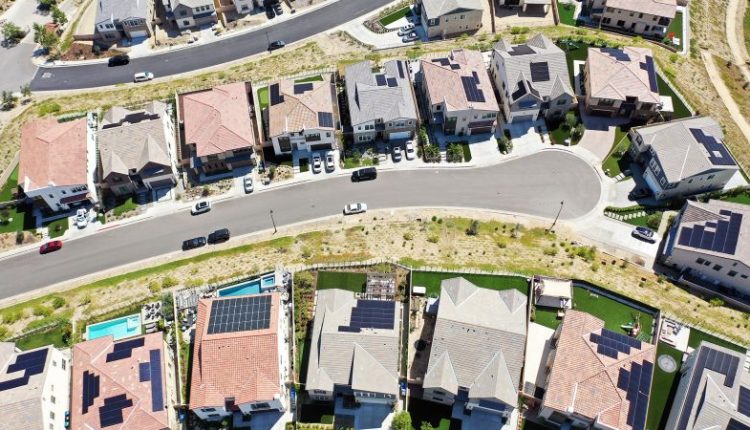Everything about financing a home purchase surged last year, from mortgage rates to fees and discount points, according to a report from the Consumer Financial Protection Bureau on mortgage costs.
After the Federal Reserve began a historic campaign to rein in inflation, mortgage rates skyrocketed from a year low of 3.22% in January 2022 to a high for the year of 7.08% in November, making homeownership an unattainable goal for many would-be buyers.
“The higher interest rate environment had profound effects on the mortgage market in 2022, with borrowers paying much more in monthly payments,” said Rohit Chopra, director of the CFPB, in a statement. “These trends are likely to continue, given further increases in interest rates in 2023.”
While the Fed doesn’t directly set mortgage rates, what it does with its benchmark lending rate influences mortgage rates — and they were hit hard last year.
In 2022, the number of mortgage applications fell by 38% from the year before, and the number of loans actually issued was down by 44%, according to the CFPB’s annual report on mortgage activity.
Overall, the report found, affordability declined significantly.
Additionally, since buyers’ cost calculations were forced to change so significantly so quickly as mortgage rates climbed and their purchasing power was hit, the report found that lenders were denying applications for insufficient income more often than in years past.
As mortgage rates surged, the average monthly payment for a 30-year, fixed-rate mortgage rose from $1,400 in December 2021 to $2,045 in December 2022 — a 46% increase. That does not include taxes or insurance.
Mortgage fees and costs went up last year too, rising by 22% from the year before to an average of $5,954.
As mortgage rates rose, more buyers began purchasing discount points as a way to “buy down” a rate. Typically, each point is equal to 1% of the borrower’s mortgage cost. Paying for one point brings the rate down about a quarter of a percentage point. A borrower with a $400,000 loan could, for example, buy down a 7.5% mortgage rate to 7.25% for $4,000.
By reducing the mortgage rate upfront, the monthly costs are lower going forward and will be smaller for the life of the loan.
Over half of borrowers paid discount points in 2022, which was more than in any other year since data collection in this area began, including in 2021, when 32.1% did. The average borrower paid $2,370 for discount points in 2022.
Hispanic and Black borrowers experienced the worst outcomes last year, as they were denied loans at higher rates, received smaller loans and were charged higher interest rates. In addition, these borrowers paid more in upfront fees than White and Asian borrowers.
For example, in 2022, the median interest rate for Black and Hispanic borrowers was above 5%, while the median rate was below 5% for White and Asian borrowers.
Overall, more people were denied a mortgage because of insufficient income to make the monthly payments.
In addition, lenders denied loan applications because of low income at higher rates last year than at any point since that data was first collected and reported (2018), when denials for all racial groups were below 40%, the report found.
The CFPB produces this annual report based on the loan-level data that financial institutions are required to collect and share as a part of the 1975 Home Mortgage Disclosure Act in an effort is to provide some transparency for consumers on home financing patterns and help identify possible discriminatory lending practices.
Read the full article here

